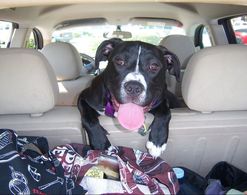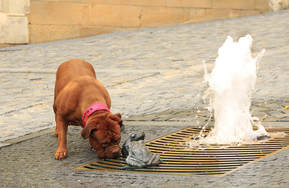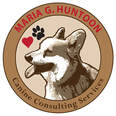A blog for all things dog-related: training, behavior, fun new doggie items, veterinary information and, of course, ways to enhance your relationship with your best four-legged friend!
|
Moving is rarely easy – whether you’re just moving across town or across the country. I would know; I’ve moved a lot in my adult life, the biggest of which was just this year (939 miles to be exact!). And as of late, I’ve had several clients preparing to be in the same boat.
BEFORE THE MOVE: Make packing a fun event. When your living space starts turning to shambles with boxes everywhere, your dog is going to know something is going on. Instead of allowing this to cause your dog some turmoil, you can make packing fun by playing packing games! As you roll your glasses in bubble wrap, practice your dog’s “sit” or “down” or “go place”, and then praise and reinforce him for maintaining his position as you wrap the glass and place it in the box. Throw in some tasty treats with that reinforcement and he’ll love this game! Instead of pacing in the corner or wearily watching what you’re doing and wondering if there’s a cause for concern, he’ll think it’s great that you’re packing and asking him to be a part of it! You can even accomplish two things at once by using your dog’s dinner kibble as his treats for playing this game – dinner and packing can happen at the same time!
Visit the new place together before the move (if you can). If your move is still a somewhat local move, it can help if you can give your dog a chance to visit and explore the new space before all the boxes arrive and chaos ensues. Walk him around the perimeter of his new yard, check out the new neighborhood, give him a tour of the new place so he can smell each of the rooms and wander around with you there to support him while the pressure is still relatively low. If he can begin to feel comfortable with the new space when there isn’t so much pressure, chances are higher that he will acclimate more quickly.
Hotel stay: If your move requires an overnight stay at a hotel or another place that is foreign to your dog, do your research beforehand to confirm the hotel allows dogs (the last thing you want to be doing is bouncing from hotel to hotel to see if they have a room for you and your dog after a long drive, and this could just stress out your dog more too!) Try to make a point of grabbing any food or supplies before you get to the hotel for the night, so you can stay in the hotel with your dog and not leave him unattended in a foreign place. Bring all the things from your dog’s “comfy place” into the hotel room, which should include a crate IF you have to leave your dog alone in the room for ANY period of time. Even if your dog doesn’t exhibit any separation anxiety at home, remember he is now in an unfamiliar place, the stress level is already higher, and he can be more likely to act out and become destructive to hotel property. Carry documentation and vet records. You never know what problems could arise from a big life transition, so play it smart and carry your dog’s vet records (particularly a rabies certificate) and vet contact information with you in your car (don’t pack them away in the moving van or pod). Some hotels also require a copy of records to let a dog stay on their premises. While you may not even need these records on your trip, it’s better to have them than be stuck without them in the event of an emergency. AFTER THE MOVE: Unpack your dog’s “comfy space” first. If your dog has a space with his same special things and smells from his previous home, it will help him feel better about his new home and bring him a sense of familiarity to some degree. Try to pick an area that is quiet and away from major foot traffic so it doesn’t have to be relocated once your belongings arrive and unpacking begins. It can become his permanent go-to little haven where he feels happy and secure. Keep things low-key during the first week or two. Soon after moving to a new location, you might be tempted to go meet all the new neighbors, explore the town, take our dog for a walk in all the new local hotspots. But just as a new location can be overwhelming for us, it can often be more overwhelming for our dogs. Your dog has already had the stress of the packing, then the travel, then getting used to a new home. Adding in too many other things while your dog is still transitioning from the first changes can add to an increased arousal level that just keeps building with each new exposure. This heightened arousal level can then lead to more reactivity. Instead, give your dog a chance to really settle in and dissipate all the emotional energy from the first changes before adding more things to his plate. Then introduce these other new situations gradually and a little at a time.
While yes, making a move with a pet does involve some extra steps, your dog will thank you for putting the time in to meet his needs during this transition. You’ll all be happier, be able to acclimate more quickly, and can just get on with enjoying your new life in your new home!
0 Comments
Your comment will be posted after it is approved.
Leave a Reply. |
AuthorMaria Huntoon, CBCC-KA Archives
April 2020
Categories |





 RSS Feed
RSS Feed






